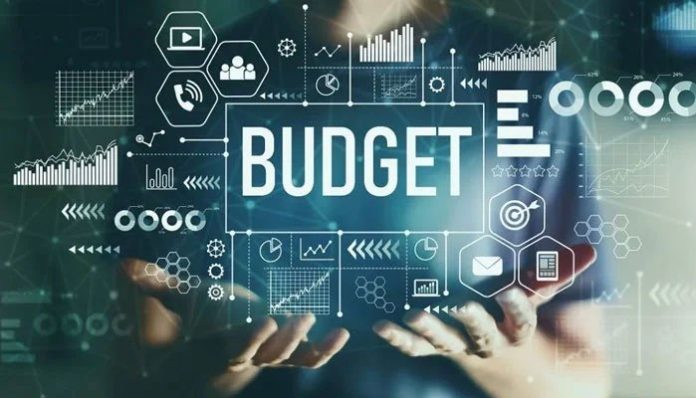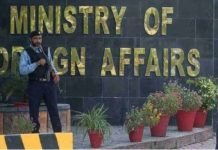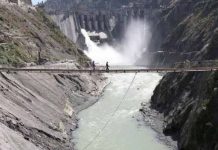The economic problems Pakistan faces right now are similar to what the PTI had faced. In 2019, with low foreign exchange reserves and high deficits, the PTI government had failed to sustain the 6% growth left by the previous PML-N regime.
At the time, the outgoing government had criticised the PTI for bringing growth to a standstill while fixing the current account deficit. With the same economic team now back in power along with other political parties, will the coalition government be able to steer the economy in the right direction without compromising on GDP growth?
With a super commodity cycle, structural economic issues, inherited inflation and delayed decisions, our economy is rapidly deteriorating. In order to stabilise the economy, the government removed the fuel subsidies, an imperative for the continuation of the International Monetary Fund (IMF) programme. However, fearing a public backlash, the current government wasted six weeks before taking this unpopular decision. This indecisiveness to increase fuel prices cost the national exchequer a loss of Rs150 billion, resulting in a 10% rupee devaluation and delay in resuming the IMF programme; this was followed by Moody’s changing Pakistan’s economic outlook to ‘negative’.
Along with the increase in fuel prices, the National Electric Power Regulatory Authority (NEPRA) has approved an increase in electricity base tariff of Rs7.91 while Oil & Gas Regulatory Authority (OGRA) has approved an increase in gas prices by 45% from July 1. These measures — along with monetary tightening and a falling rupee — indicate that a contractionary budget is inevitable.
However, the big question is whether the slowdown in FY2023 will be as bad as it was in FY2019. It wouldn’t be wrong to say that some key economic indicators such as the current account deficit and foreign reserves are more or less the same as FY19, but the global economic situation this time is more challenging due to the abnormal rise in commodity prices as a result of the Russia-Ukraine conflict.
In 2018, when the PTI took over the government, State Bank of Pakistan (SBP) reserves were a meagre $9 billion with a current account deficit of $20 billion; SBP reserves are now at $9.5 billion with the current account deficit projected at $16 billion. Although the PML-N led coalition government has taken measures like putting a ban on non-essential imports, the high prices of essential imported items like crude oil, palm oil, RLNG, coal and wheat will continue to put further pressure on the import bill resulting in a high current account deficit.
The fiscal deficit was a record high at Rs2,300 billion in FY2019 but it is expected to touch a new high of over Rs5,000 billion. High current expenditure and debt servicing, unfunded subsidies and lower than targeted non-tax revenue are likely to keep the budget deficit close to 7.5% of GDP.
The biggest challenge for this government is to manage these twin deficits when monthly inflation is already high. Monthly CPI for May clocked around 14% and is expected to touch 20% and beyond once the total impact of the increase in fuel, electricity and gas prices is reflected on food and transport.
With lurking deficits and high inflation, the GDP growth of 6% is not sustainable. Consumption needs to be slashed to slow down the pace and stabilise the economy. The SBP has already increased the discount rate to 13.75% and the T-Bills auction-rate suggests that a further hike is on the cards. More contractionary measures to cut down on imports and fiscal gaps are looking obvious in tomorrow’s budget. Next year’s Federal Board of Revenue (FBR) tax target of Rs7255 billion means an increase in the FBR tax rate, import duties and new taxes.
On the expenditure side, current expenditure has been inelastic even after popular claims of so-called austerity measures. An IMF budget will keep a check on targeted subsidies and completely disallow unfunded subsidies, which will keep sustained pressure on the purchasing power of the middle class. In the past, PML-N governments have heavily relied on PSDP allocation for growth but corrective measures to control fiscal deficit might not give them this liberty in this budget.
All these budgetary measures, along with high utilities cost and high interest payments, will increase the cost of production and decrease purchasing power which will eventually lead to an economic slowdown. And this slowdown can have a multiplier effect on the economy if it leads to layoffs and unemployment — as it becomes difficult for small — and medium-sized enterprises to sustain multiple pressures.
With stabilising measures and a contractionary budget, the growth target of 5 per cent and PSDP of Rs800 billion set by the government seem highly ambitious. It will not be possible for them to achieve this growth while curtailing high inflationary pressures. Senior economist and former finance minister Dr Hafeez Pasha has predicted GDP growth to come down to 3% and inflation as high as 23%. In 2019, during the first year of the PTI government, GDP growth came down to 1.9% from 6% due to an inexperienced economic team and a delay in going to the IMF. Let’s hope that, with an experienced team and with Pakistan already in an IMF programme, this time the situation doesn’t get as bad as in 2019.

















